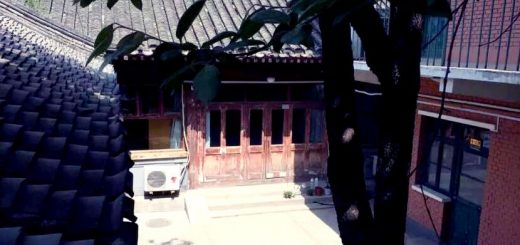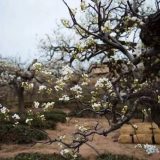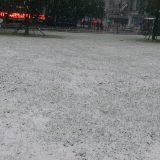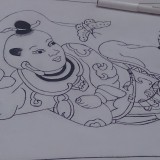10条建议,让你成为更好的艺术家!
10 Top Tips To Become a Better Artist !To become a better artist takes years of dedication, passion, energy and time. There are no short cuts but here are some art tips to send you in the right direction. I hope you enjoy what I have wrote here and look forward to the community’s response.
成为一个艺术家,需要持之以恒的努力和源源不断的激情,没有捷径可循。这里的10条建议,仅能给你指明一个方向而已。
Tip 1: Learn the Importance of the Sketch
1,速写,或者说画草图,很重要。
Sketching is one of those things that every artist MUST do and do often. Sketches don’t have to be perfect, nor do you have to show them to anyone. They can be as rough or as scratchy as you like but the thing to keep in mind is it’s readability. The purpose of a sketch is to quickly illustrate or develop an idea you have, to capture or study some form of reference so that it can be worked on at a latter date. Because of this, the sketch only needs to convey the right information to you and you alone (unless you are drawing an idea out for a client then the message needs to be crystal clear).
速写,每个艺术家都要必须,而且经常做。速写,没有必要追求完美,也没有必要展示给别人,速写的目的是快速记录你的想法。学习和研究你的参考对象,记住你的速写就像一本笔记,记录你需要的信息。
Tip 2: Draw, Draw and Draw Some More!
2,画,不停的画
This is a similar tip to the first but what I mean by this is draw anything that comes to mind or visually interests you. Sketch on the bus, train, in bed and even on the toilet. Seriously! The more you draw from your mind and from reference, the better you will become and the quicker your skills will develop. Take the time to doodle lots of different subjects and in lots of different environments as this will all help build up a mental cataloge of images to draw upon latter when you may become stuck for ideas or inspiration.
画,不分地点,时间,画不同的物体,画你不熟悉的东西。你画的越多,你就变的越厉害。
Tip 3: Build a Reference Library
3,建立你自己的博物馆
This is a great tip that I learned from years back. As you begin to fill sketch books with illustrations of ideas and reference material, you should build up that stack of books with more books. By this I mean buying art books, books on clothing, guns, tanks, other cultures, animals etc. The list of what you should look into is endless and should extend beyond your general interests. But it mustn’t stop there. You should also collect images off of the internet and save them to your computer and organize them correctly. Take photos of things you see if you don’t have time to sketch them. The purpose is to have a nice big collection of images that inspire you, inflame your imagination and, more specifically, if you need to draw something right, having the material there to draw from will add realism and clarity to your work.
其实应该是图书馆,不过很多时候,你需要的不仅仅是书,有的时候是模型,玩具,或者其他道具,当然这里主要讨论书,你需要3种书,教科书,其他人的,或者电影,游戏的作品集,最重要的是参考书,所谓参考书,应该类似国家地理,时尚杂志,百科全书,各种各样的东西的照片集,看它们的说明,研究它们是如何工作的 。
Tip 4: Explore Different Mediums
4,体验不同的画材
This is when you take an idea from sketch to final painting. Exploring other methods of creating that end piece can really yield some unexpected results and challenge you to push yourself further into new situations. Playing with different types of paints such as oil, acrylic, water colour or gouache are the options most people would suggest trying, but there is more than experimenting with these. You could try air brushing, pastels, using charcoal or taking the leap into the digital realm. All these different mediums have their strengths that you can harness but you will never know them unless you try them out.
把你的草稿,进一步变成作品的时候,你要尝试,油画,丙烯,水彩,彩色铅笔,彩色粉笔,马克笔,钢笔,很多很多,它们会给你惊喜的,不要只是用你的photoshop和手写板。
Tip 5: Learn Some Colour Theory (At Least)
5,学颜色理论
This is a big one. Colour theory is a massive, massive subject and I can’t do it justice here. What I would strongly suggest is investing time and money in a good colour theory book and learn from that. Even learning only a little bit, will help your work massivley. The more you push yourself to learn, the better and better you will become.
色彩论,真的很复杂,至少你要知道色相,彩度,明度的关系,基本的色环,知道空气透视法,知道近的物体,对比度高,远的物体,对比降低之类的。
Tip 6: Play With Perspective
6,透视,我个人觉得透视的正确与否,是一幅画成功与否的关键。
Now, by this I don’t mean completely bend the fabric of reality or attempt to mimic the works of M C Esher (but looking at his work couldn’t hurt). No! What I mean is take the time to learn about vanishing points, 2 point and 3 point perspectives and how to create objects in three dimensions correctly. As this is just a tip, I’m not going to go into the details here but there are numerous books and places on the web that cover this important area. Learning the rules of perception will open up the possibilities of what you can draw and will broaden your artistic horizons greatly.
Tip 7: Hunt Down Your Artistic Weaknesses & Destroy Them!
7,找到你的弱点,击破它。
I was told this by an incredibly exceptional artist called Chet Zar. This tip is something you should approach regularly and be really tough and honest with your self. By knowing what your not good at artistically and making a conscious effort to attack it (them, could be lots of things), will enable you to systematically grow. For instance, if you draw a lot of humans but avoid drawing feet because you know your not that good at it, set aside time to draw lots of feet, over and over again until they look right (just be sure not to get a foot fetish). This links to a previous tip I did of Draw, Draw and Draw Some More! Drawing things that you don’t draw often or at all will increase your repertoire and will enable you to paint and illustrate more complex pictures.
Tip 8: Ask For Help & Critiques
8,寻求帮助和批评
I heard this one from numerous sources and I have to say that this is something you don’t have to do all the time. Joining online art communities and forums will give you access to professionals who do know their stuff and can really help you improve, but having thick skin is advised. At one point or another, you will get some harsh and unfair comments but that is the risk of being an artist who puts art out for viewer consumption. Never be afraid to ask for help.
Tip 9: Develop an Original Style
9,探索你的个人风格
Ah, a real tough one this as developing your own style takes time and experimentation. By exploring lots of little different mediums and genres, you’ll soon get to know what you like and how you like to do things. Over time, by doing things the way you want and in the subconscious way you approach a painting, a style will emerge that will be recognizable and more importantly, it will be your style.
Tip 10: Learn to Accept Failure as a Positive Thing.
10,学会接受失败,而且是积极的接受它,找到,失败给你的提示。
Possibly one of the most important lessons an artist (or almost any professional) can learn. Not every picture you create will come out looking the way you wanted it too and the same goes with any experiment to try out. There is no such thing as a bad result… there are just results. Learning to take something positive out of everything you do will change the way you look at you next piece and how you approach it. If something doesn’t work or you don’t like it, don’t do it again or use it as a bench mark to launch yourself from in your next piece.
So, I hope that that is enough information to digest and apply into practice
So,我忘记这个笔记是转自哪里了,在此衷心感谢这篇文章的作者。























近期评论